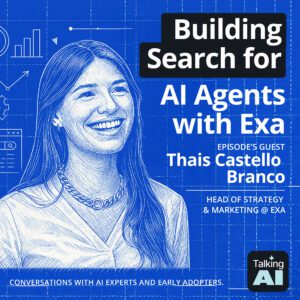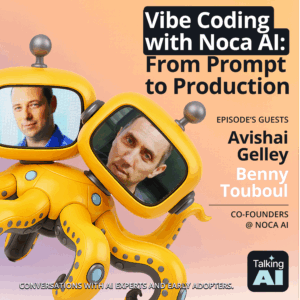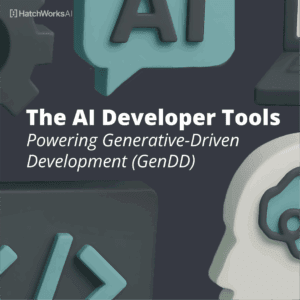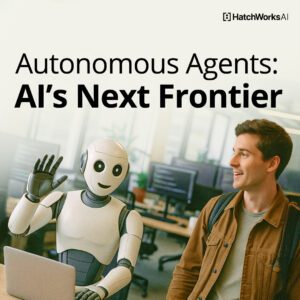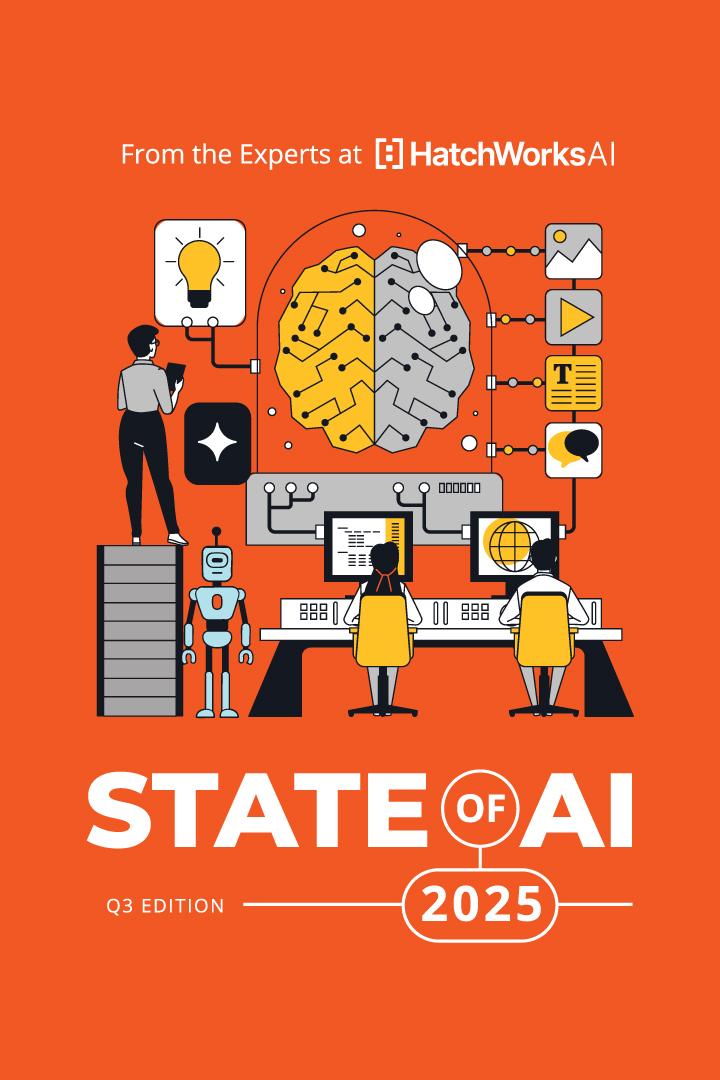Recently, I was tasked with creating a demo for an important upcoming event we had, and we were faced with the same limitation most companies have: time and resource constraints. Honestly, I wasn’t that motivated to do it as I had a ton of other work to do, but we didn’t have anyone to help out.
Three of us sat together (virtually) on Thursday afternoon and started talking about what the project would be like and what we wanted to showcase during our event. At the end of the 30- to 40-minute talk, we landed on a first iteration and all agreed on it, but then the big-elephant-in-the-room question was raised: “Who builds it?”. We all looked at each other, hoping one would say “me.” That didn’t happen.

The Power of Agency in an AI-Driven World
We started to chat, and in an attempt to divide and conquer (after voicing all of our other commitments to make up time), we decided one person would work on the happy path or user journey, and I was appointed (more appointed myself) as the person to work with the automation tool and create the workflow.
Deep down, I knew I had to take this on—not just because no one else volunteered—but because it’s part of my role as the internal research group lead. Recently, I had a similar experience with an internal Databricks project that wasn’t going anywhere due to a lack of workforce. I had to step in and help our engineer in charge of that project get it started. This task felt no different—it wasn’t just about getting the workflow done; it was about enabling the team and ensuring we could move forward.
Getting Started with a Workflow Automation Tool – The Challenge from Zero
After the call ended, I felt like I had signed up for something I had no idea about and that it was going to cost me the whole weekend with a holiday in between… Aaargh, I blew it by not pushing back! At least, that’s what was in my mind. I closed the computer as it was the end of the day and late afternoon, and decided to have dinner with the family and time away after this decision.
Hours passed, and I decided to revisit the subject. Staring at a blank canvas of n8n (the automation tool we decided to use) and feeling frustrated, I had no idea where or how to start. I remembered another co-worker using this tool for a client project, but it was all blurry to me. I just saw him use it; I didn’t actually get hands-on experience. Besides, he is assigned full-time to a client project, so good luck asking for help.
I also remembered one of the VPs talking about using it and having automation done. Again, I had no idea how to make this work. To add on top of it, we decided to do a business development representative AI Agent (BRD Agent)… but the happy path wasn’t ready, and I didn’t have what it took to make the workflow (or so the excuse built up in my head).
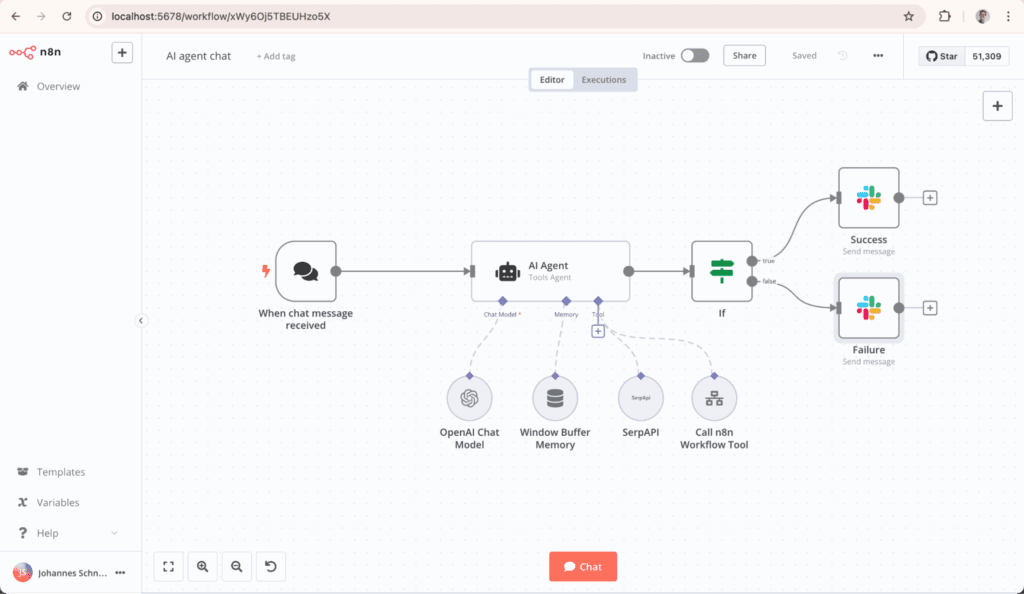
Where to Start with a Workflow Automation Tool like n8n
The irony wasn’t lost on me. Just months before, I had spent countless hours working through classical machine learning processes—building models from scratch, fine-tuning parameters, and diving deep into the mathematics behind it all.
That journey, while complex, felt methodical and structured. But this task? This was different. Despite being “simpler” on paper, it carried a weight of immediate real-world impact and visibility that made it feel more daunting than any gradient descent calculation I’d ever tackled.
Perhaps it was the compressed timeline, or maybe it was because this wasn’t just about technical execution—it was about delivering something that would directly impact our team’s presentation. Whatever the reason, this challenge triggered a different kind of anxiety.
The Role of Agency in Overcoming Challenges
After panicking and thinking I had to call it out and resign from the task, I did what I have been doing for the past three years of reskilling during my master’s: put your head down, open YouTube, read blogs and books, get my favorite LLM (large language model) to serve me with all my questions and hypotheses, and get to work.
I wish I could say it was easy after this—it just got harder. After a couple of videos and multiple Q&As with AI, everything seemed so easy (the magic of YouTube tutorials, I guess). But when I went back to the n8n canvas… NOTHING worked. Frustrated to the limit after doing all this work, I decided to call it a day and not think about it anymore. Guess what? I couldn’t sleep, thinking I had failed and committed to something I wasn’t capable of doing.
Building My First Automation on a Workflow Automation Platform
The next morning (on a holiday), my mind woke me up at 5 am, screaming inside my head: “Get up and finish this thing.” So I decided to complete my morning routine first—made a cup of coffee—and went on to watch some of the same videos again. Still couldn’t crack it.
It was a holiday, so I had the luxury of not thinking about work (even though this was for work). After breakfast and some time away from my computer, something shifted inside me—it wasn’t about feeling like I had committed above my head anymore but rather “Why is this thing not working?” Back at my desk again.
Then came an unexpected moment that changed everything. My little one walked into my room with her fashion creation stencils, scissors, and coloring pencils—ready to tackle her next fashionista design project. After struggling for several minutes trying to cut patterns for her skirt design template, she called out, frustrated: “I can’t do it; I need help!” My instinctive response? “Love, you have to keep trying,” followed by “Think about how you can solve it instead of giving up.”
That’s when it hit me—I’d approached this whole thing wrong. It wasn’t just about completing a task; it was about persistence—about seeing things through no matter how hard they seemed.
🧠 Curious how AI agents tie into automation? Learn how multi-agent systems power more advanced workflows in Understanding Agents and Multi Agent Systems for Better AI Solutions.
Lessons from a Self-Hosted Automation Platform Journey
Inspired by helping my daughter with her project and realizing that agency is as much about mindset as action, I went back determined. This time was different—I wasn’t working out of frustration or obligation; instead, curiosity drove me forward.
After five or six hours of intense effort, the workflow started working halfway! Now confident that progress was possible, I sent our self-appointed team an update around 5 pm, letting them know things were moving forward but needed more time over the weekend.
But right after sending that Slack message—something clicked inside me again—a thought popped up: “Try [X], then [Y], maybe [Z] will happen.”
Two hours later, I sent another message saying IT WAS READY! The base workflow was complete, as I waited for additional inputs from teammates.
What happened? Agency.
Practical Advice: Why We Chose a Self-Hosted Automation Platform
This experience taught me something profound—not just about workflow automation tools like n8n, but about life in general:
- Start small: Begin with basic concepts before tackling complex tasks.
- Embrace failure: It’s part of learning—don’t let setbacks discourage you.
- Leverage resources: From YouTube tutorials to AI-powered assistants—help is everywhere if you look for it.
- Don’t stop: Persistence is key—keep going until you figure things out.
And most importantly, don’t wait for someone else or some perfect moment—take ownership, have agency, and see things through.
Process Automation Is About Mindset, Not Just Tech
I’m not sharing this story for praise—it’s not about “Well done, Luis!” It’s about creating awareness, for those who still think AI tools are only for engineers or specialists, or those waiting passively for technology to do everything for them.
In this era, you need agency to start things, to suffer through rejection or doubt, and most importantly, to finish what you start. Once you cross that bridge, you’ll never look at challenges—or yourself—the same way again.
As part of my day-to-day, I get to talk to incredibly interesting and intelligent clients, coworkers, and friends—people who challenge your thinking so deeply that you sometimes wonder if you’re in the wrong place. It’s humbling, but it’s also a reminder to push yourself further.
From Frustration to Confidence with a No-Code Automation Tool
Taking over the research group at my workplace has been one of those moments that forced me to see things differently, to embrace discomfort, and to challenge myself in ways I hadn’t before. It’s in these moments, when you feel stretched beyond your limits, that agency becomes your greatest ally.
Now, with less than 48 hours under my belt, I have a backlog of 10–15 business processes ready for automation using a tool that felt impossible just days ago.
So here’s my challenge for you—whatever task feels daunting right now, whatever skill seems out of reach—take ownership, commit, and don’t stop until you’re done.
Because in this AI-driven world, it’s not just technology that will define success; it’s human agency—the ability and courage to see things through.
🤖 Want to get a handle on AI agents fast? Check out AI Agents Explained: Functions, Types, and Applications for a clear breakdown of what they are and how they work.
Essential AI Skills for Your Team
AI Training for Teams gives your team foundational AI knowledge, preparing you to effectively integrate AI into your business.
